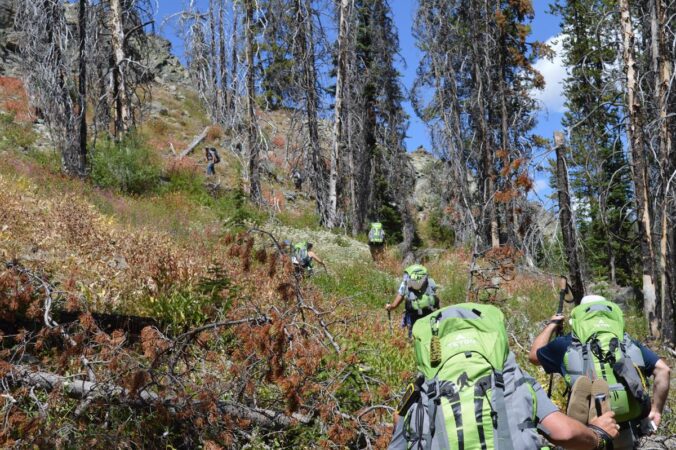In my last Trail Tip post, I discussed dehydration. I went over how to spot the symptoms and how to treat someone with mild to moderate dehydration. In this Trail Tip, we will discuss how to spot and treat heat exhaustion.
Heat exhaustion can occur when you have an inadequate or unbalanced replacement of fluids caused by physical exertion during high temperatures. Many hikers, backpackers, and climbers who are participating in activities in the desert, with high temperatures, and high humidity levels will be more susceptible to heat exhaustion. When the body temperature increases and is unable to cool itself properly heat exhaustion can occur. The best way to keep from getting heat exhaustion is to stay hydrated and not hike or climb during the hottest part of the day. Heat exhaustion is a step above dehydration, but less severe than heatstroke. Heat exhaustion can be easily treated as long as the symptoms are noticed early and treatment administered as soon as the symptoms begin. If the symptoms continue this can be a sign of heatstroke.
Disclaimer: We are not medical professionals however they have had training in wilderness first aid. If you or anyone in your party has signs of severe dehydration, severe heat exhaustion, heatstroke or you do not feel comfortable with a situation, seek medical help immediately.
Symptoms of Heat Exhaustion
- Headache
- Nausea
- Muscle cramps
- Cool, moist skin with goosebumps when in the heat
- Heavy sweating
- Faintness
- Dizziness
- Fatigue
- Weak, rapid pulse
- Becoming light-headed or dizzy when standing. up
How to Treat Heat Exhaustion
- Stop your activity and find shade.
- Loosen clothing or take off any unnecessary layers.
- Wet a rag or shirt and place around the neck
- pour water on the head and face.
- Drink cool water or non-alcoholic, non-caffeinated beverages like sports drinks to help restore electrolyte balance.
- Massage or stretch cramping muscles.
- Monitor your temperature for changes in your condition that suggest heat stroke (If the temp is 104 degrees F or greater seek immediate medical assistance).
- If you are able to get to an air-conditioned building or vehicle do so. (Do not sit in a hot vehicle while waiting for the vehicle to cool down. Instead, sit outside in the shade.)
By understanding these signs and knowing how to respond, you can effectively manage mild dehydration and continue your adventures safely.
Remember, while I strive to provide valuable tips based on wilderness first aid training, I am not a medical professional. Dehydration can escalate quickly, especially in extreme conditions. If you or anyone with you experiences severe dehydration symptoms or if you feel uncertain about a health condition, seek assistance from a medical professional or dial 911 immediately. Stay safe and hydrated on the trail!



Leave a Reply